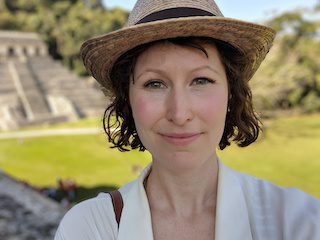
Photo by Tim Goedhart on Unsplash
You know, sometimes it helps to say what seems like the simplest of things. It helps to be reminded, in other words, and this is where our teachers often come in, pointing us with endless patience, and in a multitude of ways, to the door that says “awakening”.)
So here’s a thing I hope anyone practicing a form of mindfulness or meditation will agree to be true:
While on retreat one time, I noticed that going over and over my story about “me” in my head is not useful, calming, or satisfying, even though it may seem so.
Sound true?
In fact, being in my story-thinking brain is often a response to a worry that things will not get done, and, get this, it’s a line of thinking that does not actually help me get things done better. Yet, if I stop worrying or thinking about my story, other more useful things can fill that space, such as peace, creative inspiration, or listening.
So, when making plans I have found it helps to stay focused and calm. And that going over my story or reruns of “me” is not helpful when I’m thinking about what to do in the next moment or the next few hours.
So here’s something I’ve learned from doing Karma Yoga (mindful service) for Clear Sky, and then applying this mindful presence in my life.
Mindfulness gives us the space we need to be the best version of ourselves
So often, I am running around at work or at home, unconsciously worrying that things will not get done. Or, I may worry about how well things will turn out. At these times, I go to what is familiar, which my way of thinking, what I would like to call my “story about me”.
In this mode, I work from my own unconscious patterning: i.e. I most likely repeat how I have done something in the past, or reinforce my own view of others or a situation. This gives me a false sense of refuge or security, or that I’m right or in control.
Note: this is normal. Everyone does some version of this.
What I would like to point out is how debilitating this can be. And not just on the level of suffering that the Buddhist teachings point to. Also with regard to quality of life, of getting things done and doing them well.
Another simple, but true:
So instead of focusing on rerun episodes of “me”, I think it is useful to be in the present.
Some ways I have found to help me practice being present in the moment are:
Transitions as mindfulness check-ins
I choose a transition, such as going through doorways, to have a mindfulness check-in with myself. In my case, this helps particularly upon entering my classroom (I’m a teacher) for the first time each day. This daily check-in allows me to be grounded at an important time, and reinforces other mindfulness techniques such as the following things.
Settling into my chair
Mindfulness of the body is key, it is the starting point for overall mindfulness. In fact, it is the first of the “Four Foundations of Mindfulness.” It can be very empowering to be mindful of feeling oneself sitting in a chair, for example. It doesn’t have to take any time, though perhaps at first you’ll want to do a body scan or at least take your time with it. Over time, it becomes quicker and quicker. If you want to have fun with it ask yourself, “Where’s my butt?”
Stopping to think prior to taking action
This is also key and perhaps where I struggle most. When I stop and take stock before acting, I find that over the years, I have built some better skills regarding planning and preparation. When I am worrying, it’s usually because I haven’t taken the needed time to plan.
Take a (mindful) breath:
Yes – anywhere, anytime, taking a breath will help.
A particular exercise was taught to me by a chiropractor. She places her hands over three places on her abdomen and takes one breath at each of them: the lower abdomen, mid-abdomen, and upper abdomen (over the heart). I find that even putting one’s hands over one’s heart and just sitting for one breath can bring calm and ease.
Summary: mindfulness brings me full circle
It goes something like this :
I, like many people in the twenty-first century, have many things to do.
I start to worry about accomplishing them. This registers consciously or unconsciously as worry/ discomfort. I do a mindfulness check in with myself and two things happen, leading to a third:
1) I calm down, giving me a possibility of being effective.
2) I begin to plan and have an even greater chance at being effective.
3) Importantly, this results in as many things getting done to the degree in which it is possible to do them in the time available.
By Dan O’Brien
Edited by Andrew Rogers


